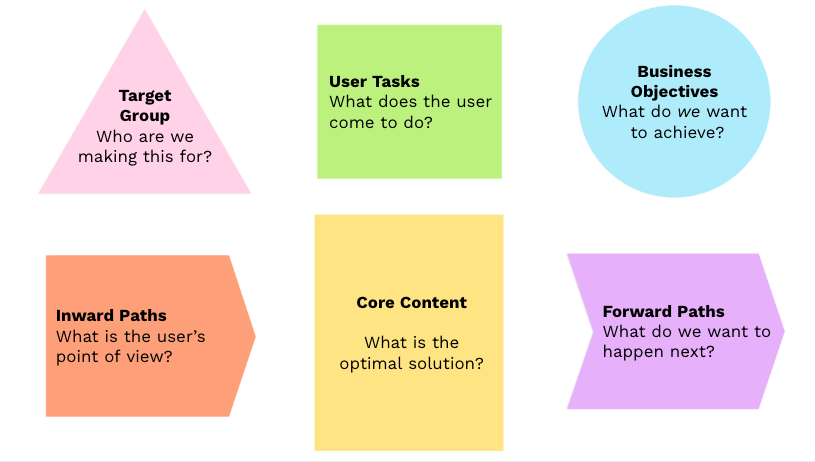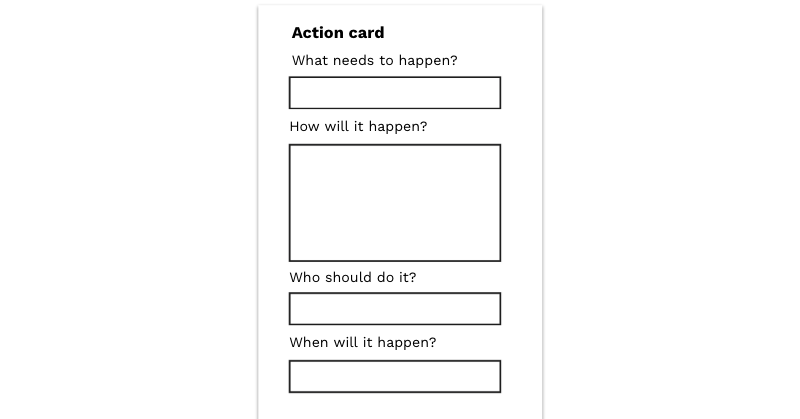

Source: Articles on Smashing Magazine — For Web Designers And Developers | Read More
Ever sat in a meeting where everyone jumped straight to solutions? “We need a new app!” “Let’s redesign the homepage!” “AI will fix everything!” This solution-first thinking is endemic in digital development — and it’s why so many projects fail to deliver real value. As the creator of the Core Model methodology, I developed this approach to flip the script: instead of starting with solutions, we start FROM the answer.
What’s the difference? Starting with solutions means imposing our preconceived ideas. Starting FROM the answer to a user task means forming a hypothesis about what users need, then taking a step back to follow a simple structure that validates and refines that hypothesis.
Six Good Questions That Lead to Better Answers
At its heart, the Core Model is simply six good questions asked in the right order, with a seventh that drives action. It appeals to common sense — something often in short supply during complex digital projects.
When I introduced this approach to a large organization struggling with their website, their head of digital admitted: “We’ve been asking all these questions separately, but never in this structured way that connects them.”
These questions help teams pause, align around what matters, and create solutions that actually work:
This simple framework creates clarity across team boundaries, bringing together content creators, designers, developers, customer service, subject matter experts, and leadership around a shared understanding.
Starting With a Hypothesis
The Core Model process typically begins before the workshop. The project lead or facilitator works with key stakeholders to:
This preparation ensures the workshop itself is focused and productive, with teams validating and refining hypotheses rather than starting from scratch.
The Core Model: Six Elements That Create Alignment
Let’s explore each element of the Core Model in detail:

Rather than detailed personas, the Core Model starts with quick proto-personas that build empathy for users in specific situations:
The key is to humanize users and understand their emotional and practical context before diving into solutions.
Beyond features or content, what are users actually trying to accomplish?
These tasks should be based on user research and drive everything that follows. Top task methodology is a great approach to this.
Every digital initiative should connect to clear organizational goals:
These objectives provide the measurement framework for success. (If you work with OKRs, you can think of these as Key Results that connect to your overall Objective.)
This element goes beyond just findability to include the user’s entire approach and mental model:
Understanding these angles of different approaches ensures we meet users where they are.
What should users do after engaging with this core?
These paths create coherent journeys (core flows) rather than dead ends.
Only after mapping the previous elements do we define the actual solution:
This becomes our blueprint for what actually needs to be created.
The Core Model process culminates with action cards that answer the crucial seventh question: “What needs to be done to create this solution?”

These cards typically include:
Action cards transform insights into concrete next steps, ensuring the workshop leads to real improvements rather than just interesting discussions.
The Power of Core Pairs
A unique aspect of the Core Model methodology is working in core pairs—two people from different competencies or departments working together on the same core sheet. This approach creates several benefits:
The ideal pair combines different perspectives — content and design, business and technical, expert and novice — creating a balanced approach that neither could achieve alone.
Creating Alignment Within and Between Teams
The Core Model excels at creating two crucial types of alignment:
Modern teams bring together diverse competencies:
The Core Model gives these specialists a common framework. Instead of the designer focusing only on interfaces or the developer only on code, everyone aligns around user tasks and business goals.
As one UX designer told me:
“The Core Model changed our team dynamic completely. Instead of handing off wireframes to developers who didn’t understand the ‘why’ behind design decisions, we now share a common understanding of what we’re trying to accomplish.”
Users don’t experience your organization in silos — they move across touchpoints and teams. The Core Model helps connect these experiences:
By mapping connections between cores (core flows), organizations create coherent experiences rather than fragmented interactions.
Breaking Down Organizational Barriers
The Core Model creates a neutral framework where various perspectives can contribute while maintaining a unified direction. This is particularly valuable in traditional organizational structures where content responsibility is distributed across departments.
The Workshop: Making It Happen
The Core Model workshop brings these elements together in a practical format that can be adapted to different contexts and needs.
For complex projects with multiple stakeholders across organizational silos, the ideal format is a full-day (6–hour) workshop:
First Hour: Foundation and Context
Hours 2–4: Core Mapping
Hours 5–6: Presentation, Discussion, and Action Planning
The format is highly flexible:
The Core Model workshop thrives in different environments:
Note: You can find all downloads and templates here.
The composition of core pairs is critical to success:
Important to note: The workshop doesn’t produce final solutions.
Instead, it creates a comprehensive brief containing the following:
This brief becomes the foundation for subsequent development work, ensuring everyone builds toward the same goal while leaving room for specialist expertise during implementation.
Getting Started: Your First Core Model Implementation
Ready to apply the Core Model in your organization? Here’s how to begin:
Before bringing everyone together:
Select participants who represent different perspectives:
Guide core pairs through the process:
Transform insights into concrete actions:
In Conclusion: Common Sense In A Structured Framework
The Core Model works because it combines common sense with structure — asking the right questions in the right order to ensure we address what actually matters.
By starting FROM the answer, not WITH the solution, teams avoid premature problem-solving and create digital experiences that truly serve user needs while achieving organizational goals.
Whether you’re managing a traditional website, creating multi-channel content, or developing digital products, this methodology provides a framework for better collaboration, clearer priorities, and more effective outcomes.
This article is a short adaptation of my book The Core Model — A Common Sense to Digital Strategy and Design. You can find information about the book and updated resources at thecoremodel.com.